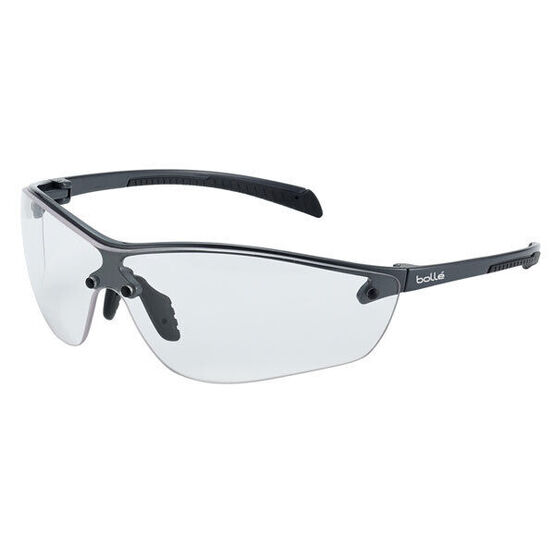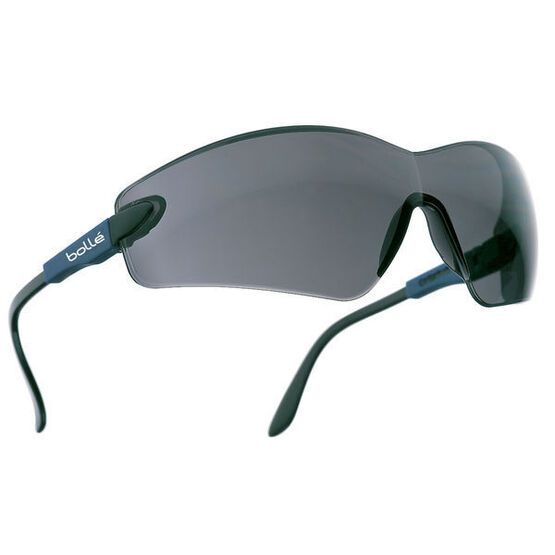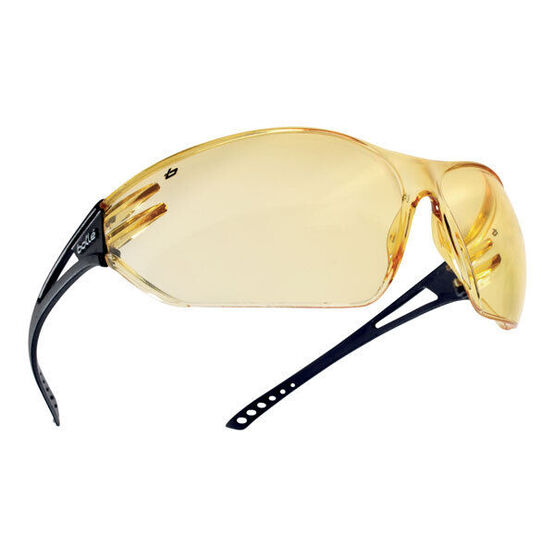Many different trades, occupations and working environments require quality eye protection in order to keep workers' eyes safe. There are many things to consider when choosing the correct protection and you must identify, assess and rank the risks involved. There is a vast choice of frame styles and lens options available today and each has been specially designed to suit various conditions.
All manufacturers of safety eyewear are required to have their products independently tested against European Standards. Both the lens and frame must be tested and should display both the CE symbol along with the manufacturer's logo. This proves certification that the product has met all safety standards required. EN standards codes will also be displayed on both the lens and frame to show how each is certified. Every test is different but specific for the intended use. It may be worth familiarising yourself with these standards before making a purchase.
It is important to identify the risks involved in any given scenario. Here are some examples:
Thermal Risk
A thermal risk can occur when someone is exposed to liquids, hot solids or radiation. This could include heat from ovens or splashes from molten metals. The ‘9’ symbol must be displayed to guarantee protection against thermal risks.
Mechanical Risk
Mechanical risks stem mostly from operating machinery. The risk associated here is with sharp particles such as metal chips and shards from grinding work and tools, and high kinetic energy. Symbols ‘F’ (low), ‘B’ (medium) and ‘A’ (high) define the protection rating against mechanical impacts.
Optical Radiation
Optical radiation can be a risk in many fields of work including medical, industrial and commercial. Here, surgical procedures, gas and electrical welding and other steel processes could impose optical radiation risks. The risk linked to radiation also includes ultraviolet, infrared and visible light. It is crucial to protect the eyes from such radiation because it can cause burns and lesions. There are many different risks which each have a different symbol and offer various levels of protection against optical radiation.
Chemical Risk
A chemical risk is posed when a hazardous substance is projected or is present in the environment. Examples include aerosols, dust, liquids, gases or vapours. Such risks are often present in the medical, agri-food and waste management industries. Symbols to look for include: 3 - protection from droplets and splashes, 4 - protection from large dust particles and 5 - gas and fine dust particles.
Electric Risk
Where an electrical risk is present, the only proper protection that should be considered is a face shield. The face shield must not have any metal parts and must be completely rounded featuring no sharp edges. There could be severe consequences of an electric shock such as burns to the cornea, retinal lesions and conjunctivitis. Protection against electrical risks must display the ‘8’ symbol to guarantee protection.
Light is made from many different wavelengths. The light we see is known as the visible spectrum of light. There are many other waves, some of which we cannot see, such as Ultraviolet. When it comes to safety glasses and eye protection, we need to be concerned only with the energy that comes from sunlight and artificial light. These include UV, Infrared and the visible spectrum. The human eye can detect wavelengths between 380 and 780 nanometers. These wavelengths reflect off various surfaces to produce the visible spectrum of colours.
As wavelengths of light become shorter, they build more energy and are therefore more harmful. The sun's UV light has a shorter wavelength than our visible spectrum and retains more energy. We know that UV light can cause sunburn to our skin and there is no exception for our eyes. Exposure to invisible UV light can build up over time and can have a detrimental effect on our eyesight. Wearing safety glasses whilst working outside, particularly on bright sunny days will offer protection against these harmful rays. The same applies to radiographers working in a medical environment.
Safety glasses are available with different types and colours of lenses. Each has been designed to suit various light conditions.
Clear Lens
A clear lens is a great all-rounder and a very popular choice. They offer as near to natural vision as possible whilst filtering around 10% or less of the visible spectrum. They can also offer excellent UVA/UVB protection. They are suitable for both indoor and outdoor use.

Smoke Lens
The smoke (grey) lens provides excellent colour recognition, reduces glare and enhances contrast and depth for better perspective. They can block out up to 87% of visible light so are ideal for working outdoors in bright conditions. They also offer 99.9% UVA/UVB protection.

Yellow Lens
Yellow lenses are perfect for low light conditions, particularly at dawn or dusk or indoors. They can enhance contrast and make things appear brighter for better visibility. They block out blue light, eliminating haze.

Polarised Lens
A polar lens vastly reduces glare which prevents fatigue and stress often caused when the sun's rays reflect from surfaces such as glass, car paint or water. Ideal for wearing outside, they offer excellent protection against the sun's rays.
Safety glasses are safe to wear all day and will not have a negative impact on your sight. Focusing intently whilst wearing them, however, could cause eye strain leading to headaches and fatigue. It’s important to choose high quality protection that is less likely to cause such issues. Taking regular breaks will also help to prevent this.
You can browse the full range of safety glasses available at SHD Medical here.
Sources:
https://www.bolle-safety.com/page/selection-guide
https://www.nothingbutsafetyglasses.com/images/documents/glasses_guide.pdf
https://uk.rs-online.com/web/generalDisplay.html?id=ideas-and-advice/safety-goggles-guide